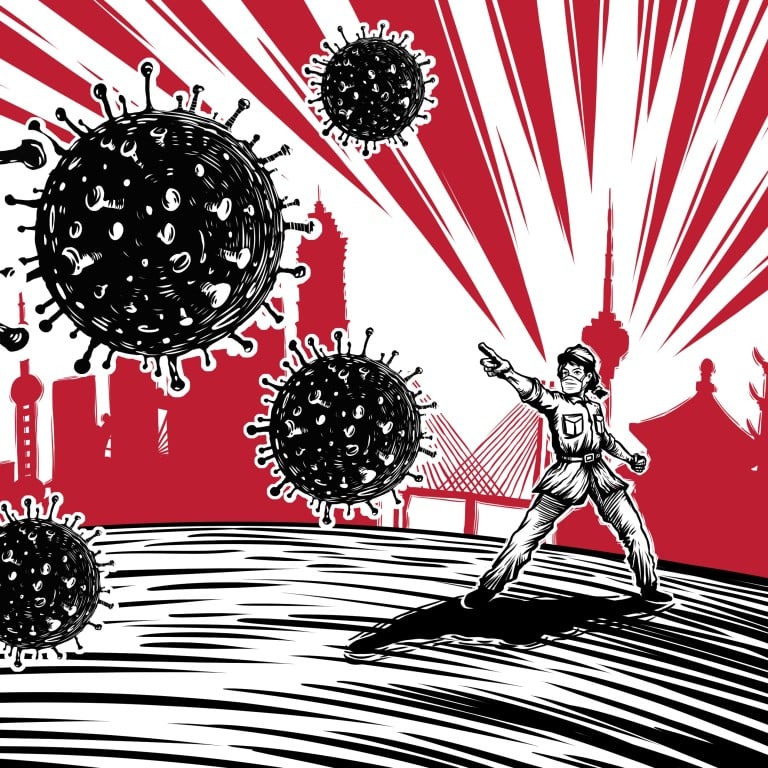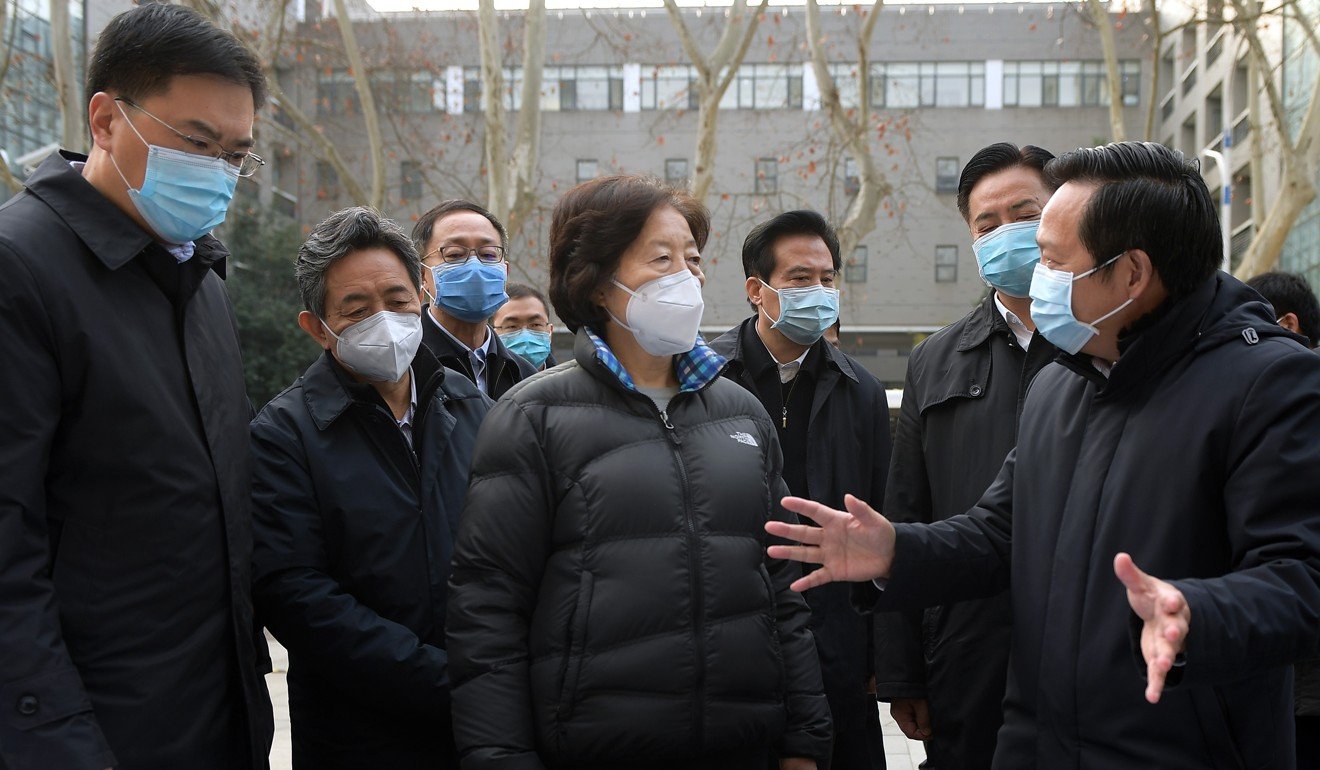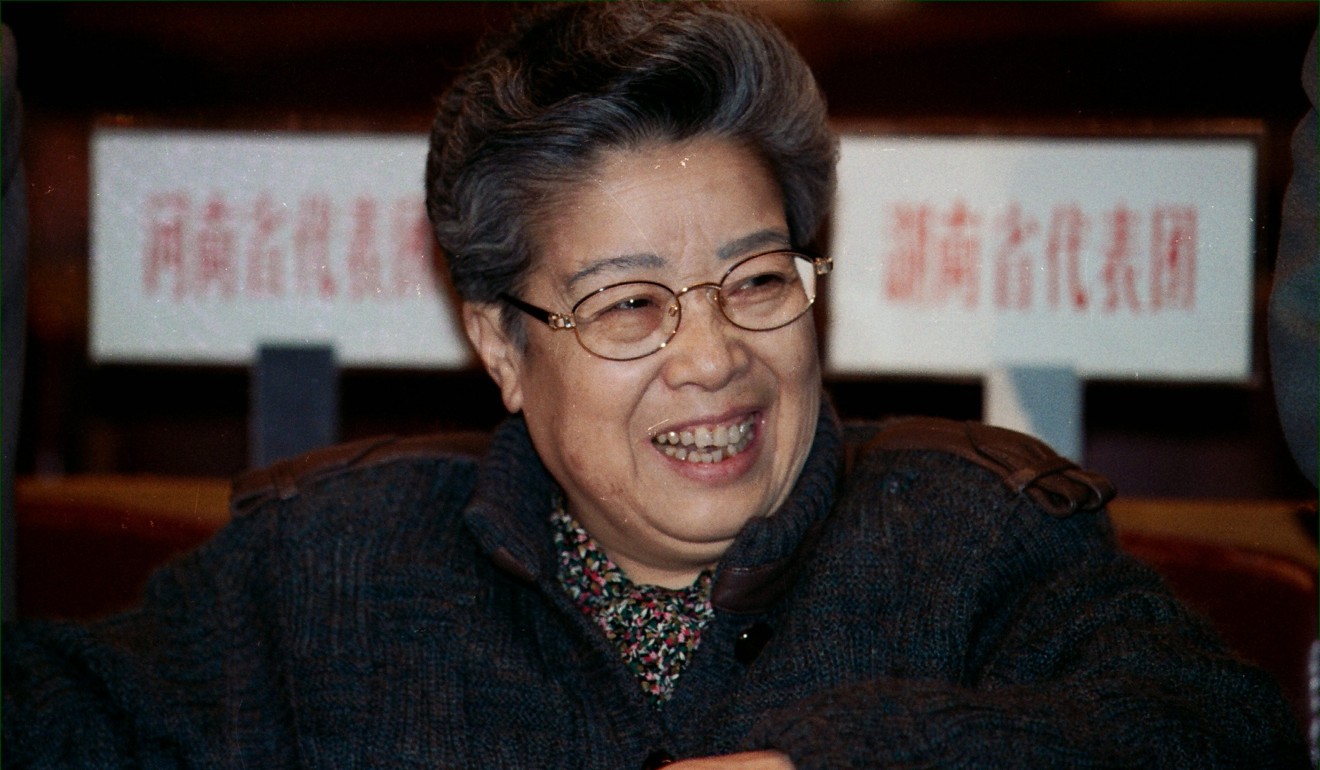
In the firing line: the women in China’s war on the coronavirus
- Vice-Premier Sun Chunlan has been the face of the Politburo in Wuhan for more than a month, and she’s under mounting pressure
- She may be seen as more able to win trust in a country that usually ‘relies more on the men for their aggression and confidence to rule’
China’s former leader Mao Zedong famously declared that “women hold up half the sky” – a propaganda slogan first used in 1955 to encourage more of them to work in rural cooperatives, plough the fields, plant rice and help boost agricultural output.
In the country’s war on the coronavirus, women are taking on the tough jobs and holding up half, or even more, of the sky, analysts and feminists say – though they are also in the firing line for blame, and at the centre of a controversial state media campaign.

Ding Xiangyang, deputy secretary general of the State Council, China’s cabinet, reinforced Sun’s message to Hubei officials at a press conference in Wuhan on February 20.
“The whole commanding system needs to improve its efficiency. If the system continues to work as if it’s business as usual, it can’t be called ‘wartime’ and we can’t win this battle,” Ding said. “Vice-Premier Sun Chunlan has asked everyone involved to rectify this.”
But although she is at the heart of the crisis, state media coverage of Sun’s leadership has been limited, and President Xi Jinping is believed to be making the decisions on important matters, analysts say.
“I have at every moment monitored the spread of the epidemic and progress in efforts to curtail it, constantly issuing verbal orders and also instructions,” Xi said of his involvement in the crisis.
Steve Tsang, director of the SOAS China Institute at the University of London, said while Xi was pulling the strings in Beijing, other leaders were taking care of public security, foreign policy, propaganda and other issues the top leadership saw as more important than what Sun was doing on the ground.
But it was her role in Wuhan that took courage and strength, according to Dali Yang, a political scientist at the University of Chicago.
“And the devil is in the detail,” Yang said. “Since Sun is in charge of the daily operations for public health affairs, she becomes an easy target – someone who can be blamed for all kinds of problems.”

According to the World Bank, just 23.9 per cent of parliamentary seats across the globe are held by women. In China, it is much worse – the country has had just six women in its Politburo since 1949.
Hu Xingdou, an independent political scientist, said women politicians were seen as more able to win the understanding and trust of ordinary people during a time of crisis.
“But most of the time, China relies more on the men for their aggression and confidence to rule the country,” Hu said.
“Women are playing very important roles in the battle against this disease, doing their jobs at a crucial time,” said Feng Yuan, co-founder of Equality, a non-governmental organisation in Beijing.
“But I’m disappointed to see some media focusing on their conventional gender roles and portraying them as the weaker sex while highlighting unnecessary personal sacrifices they were forced to make.”
Reports last month of women nurses from a number of cities having their heads shaved for “convenience” and to help control the spread of the disease before they travelled to Wuhan to lend a hand provoked outrage online. Their hospitals said the women were “willing” to do this, but some of the nurses were seen in video footage weeping while their hair was cut off.
That came after CCTV on February 11 described nurse Zhao Yu as “a great mother and angel in a white gown” for continuing to work in the emergency ward of a military hospital in Wuhan while heavily pregnant. The broadcaster said Zhao had insisted on working despite being 20 days away from giving birth, in a report hailing her devotion to her job – but social media users raised concern about the situation and the clip was withdrawn from CCTV’s website.
The next day, Wuhan Evening News praised a 27-year-old nurse who had returned to work 10 days after surgery following a miscarriage – again it did not get the intended response online.
Lu Pin, a feminist campaigner, said it was “inhuman” to pressure or encourage women to make these personal sacrifices.
“It shed light on the social environment Chinese women live in. It’s a cruel reality that there’s a lack of physical autonomy and insufficient protection at work, among other things,” said Lu, who lives in New York. “Their status is incompatible with the contribution women have made to the country.”
Purchase the China AI Report 2020 brought to you by SCMP Research and enjoy a 20% discount (original price US$400). This 60-page all new intelligence report gives you first-hand insights and analysis into the latest industry developments and intelligence about China AI. Get exclusive access to our webinars for continuous learning, and interact with China AI executives in live Q&A. Offer valid until 31 March 2020.

